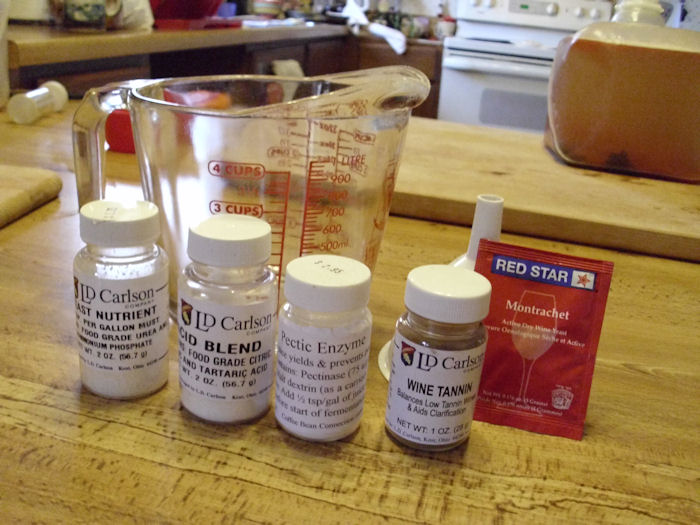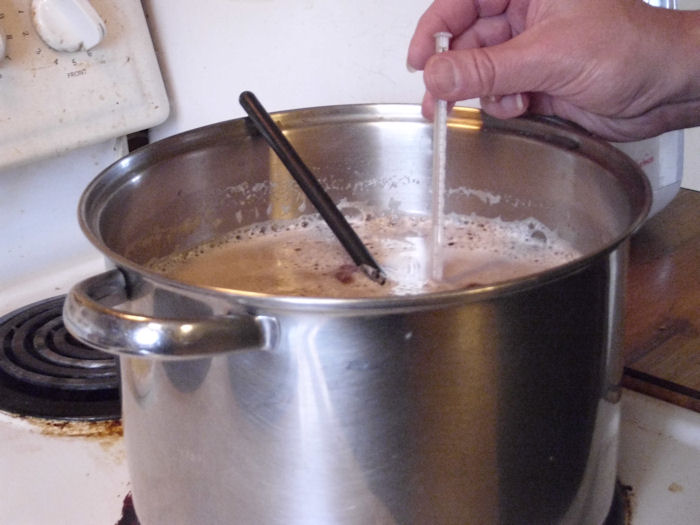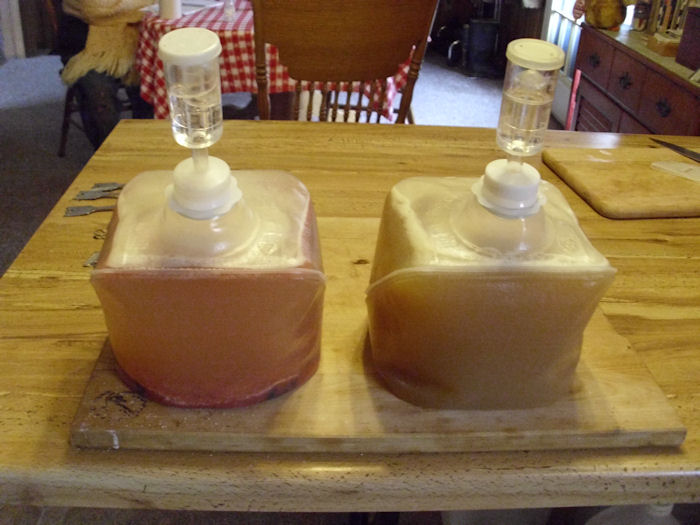In my post, Wine Making – Day 1, I discuss how to start a batch of wine. If you followed that post, your wine has been perking away for several days now. In fact, tomorrow you’ll start to think about doing the Day 10 processing. Of course, this all assumes that everything has gone as planned. In most cases, it does, but there are situations where the wine can simply stop fermenting. The little plug inside the air lock may even float to the bottom. Even if it hasn’t, when the bubbles stop appearing every minute or two (the fermentation process slows as the yeast turns the sugar into alcohol) you know something is wrong—you have a stuck batch.
Don’t fret! Your efforts haven’t been wasted. I’ve never run into a situation where I wasn’t able to get the wine restarted with a little patience.
Start by placing your ear next to the container. If you can still hear some bubbles, you’re actually in great shape. In fact, spend a little more time looking for bubbles because the fermentation does slow considerably by day 10. If you don’t hear anything, you might have to work just a bit harder to get the batch restarted. In most cases, you’re just fine as long as you can still smell the yeast when you open air lock.
The first step is to ensure your wine containers are in a room where it’s warm enough to ferment. The lowest room temperature that has ever succeeded for me is 50 degrees Fahrenheit. You normally want the room temperature in the 70 degree range. Having the temperature too high is also unproductive. If you live in a warm climate and the air temperature is 95 degrees or higher, you’ll likely find that the yeast has a hard time continuing to work. Theoretically, the yeast will live just fine all the way up to 110 degrees in most cases, but most of us (yeast included) have a comfort zone.
The next step is to add a cup of sugar to the batch using the funnel. Add the sugar slowly. If you add it all at once and the yeast is still active, there is a tendency for the wine to bubble violently and create a mess by spilling out of the top of the container. After you add the sugar, use the handle of a slotted spoon to stir the sugar in (being careful to disturb the sediment at the bottom of the container as little as possible). Here’s what my slotted spoon looks like:
The spoon is almost flat and it has a skinny handle. This spoon is perfect for working with the fermentation container opening. (I was lucky to find this sort of spoon in plastic, normally you see them as wooden spoons.)
Look at the batch and listen to it again. If you see tiny bubbles and hear them when you listen to the container, you know that the batch has restarted. Close the airlock and let the wine continue to ferment.
However, you might find that the wine still hasn’t restarted. In this case, add 1 teaspoon of yeast nutrient to the batch and stir it in using the handle of the spoon. Listen again to see if you’ve been successful. In many cases, you’ll have to wait about five minutes to see any effect—be patient!
If the wine doesn’t restart after you add the nutrient, try adding some more wine yeast (I generally use Montrachet). The old yeast might still be alive, but there may not be enough left to restart the batch. Sprinkle the full amount required for the size batch you’re trying to create. Remember that one packet of yeast is normally good for around 5 gallons of wine. This time, put the airlock back in place and wait for fifteen minutes.
I’ve never had wine fail to restart by this point. If you supply sugar, nutrient, and yeast at the right temperature, then the wine should ferment just fine. However, the temperature can be a tricky part of the process. Take the wine’s temperature using your dairy thermometer. If the temperature is too low, place the container in a warmer location. Generally, it’s a bad idea to pour the contents out of the container and try to reheat it in another container on the stove. If you do have problems getting your wine restarted, we may be able to work out a solution. Let me know at [email protected].





